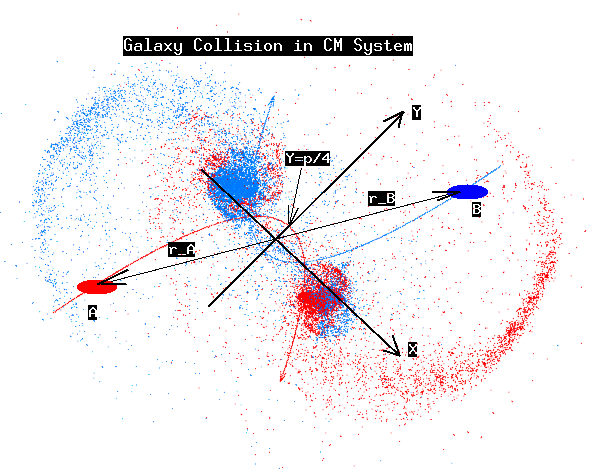
For the initial condition, consider to separate galaxies on parabolic collision course. Galaxy A and galaxy B do not overlap initially, and the center of masses of the individual galaxies would continue on a parabolic orbit, if the interactions of the stars would not change the picture when the galaxies begin to overlap.

First, we would like to set up the appropriate initial condition for the collision as depicted in the figure above. Notes on the algorithm are given in collision orbit note. Notes on the galaxy rotations are given in Galaxy Rotations note. Examples of initial setups from previous projects are given in Table of initial conditions.
The classic paper Galactic Bridges and Tails (Toomre&Toomre) provides a simple physical model for the understanding of galaxy collisions. We will explore three distinct collisions in the model: Mice, Antennae, and Cartwheel. The Midterm and the Final projects will be prepared by teams. In the Midterm projects we will apply the Toomre&Toomre model to the problems. In the Final projecst the teams will run full simulations.
Path to nbody source code directory: /Developer/NVIDIA/CUDA-5.0/samples/5_Simulations/nbody
use the command make to compile the code
binary (executable) runs from: /Developer/NVIDIA/CUDA-5.0/samples/bin/darwin/release/nbody